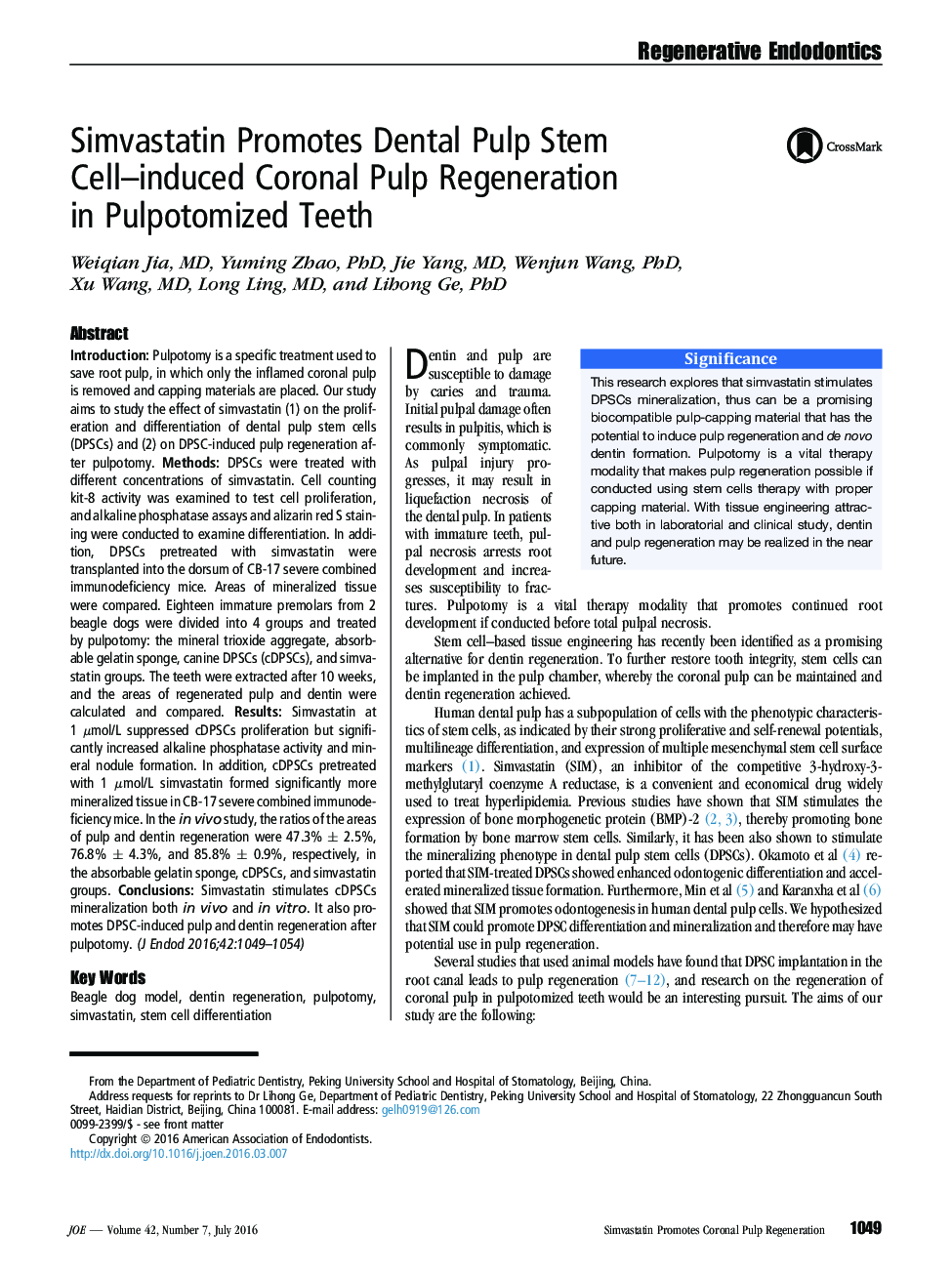| Article ID | Journal | Published Year | Pages | File Type |
|---|---|---|---|---|
| 3147640 | Journal of Endodontics | 2016 | 6 Pages |
•Study of the effect of simvastatin on DPSC differentiation both in vitro and in vivo.•Research on the regeneration of coronal pulp in pulpotomized teeth is an interesting pursuit.•Simvastatin is a promising biocompatible pulp-capping material that has the potential of inducing pulp regeneration and de novo dentin formation.
IntroductionPulpotomy is a specific treatment used to save root pulp, in which only the inflamed coronal pulp is removed and capping materials are placed. Our study aims to study the effect of simvastatin (1) on the proliferation and differentiation of dental pulp stem cells (DPSCs) and (2) on DPSC-induced pulp regeneration after pulpotomy.MethodsDPSCs were treated with different concentrations of simvastatin. Cell counting kit-8 activity was examined to test cell proliferation, and alkaline phosphatase assays and alizarin red S staining were conducted to examine differentiation. In addition, DPSCs pretreated with simvastatin were transplanted into the dorsum of CB-17 severe combined immunodeficiency mice. Areas of mineralized tissue were compared. Eighteen immature premolars from 2 beagle dogs were divided into 4 groups and treated by pulpotomy: the mineral trioxide aggregate, absorbable gelatin sponge, canine DPSCs (cDPSCs), and simvastatin groups. The teeth were extracted after 10 weeks, and the areas of regenerated pulp and dentin were calculated and compared.ResultsSimvastatin at 1 μmol/L suppressed cDPSCs proliferation but significantly increased alkaline phosphatase activity and mineral nodule formation. In addition, cDPSCs pretreated with 1 μmol/L simvastatin formed significantly more mineralized tissue in CB-17 severe combined immunodeficiency mice. In the in vivo study, the ratios of the areas of pulp and dentin regeneration were 47.3% ± 2.5%, 76.8% ± 4.3%, and 85.8% ± 0.9%, respectively, in the absorbable gelatin sponge, cDPSCs, and simvastatin groups.ConclusionsSimvastatin stimulates cDPSCs mineralization both in vivo and in vitro. It also promotes DPSC-induced pulp and dentin regeneration after pulpotomy.
